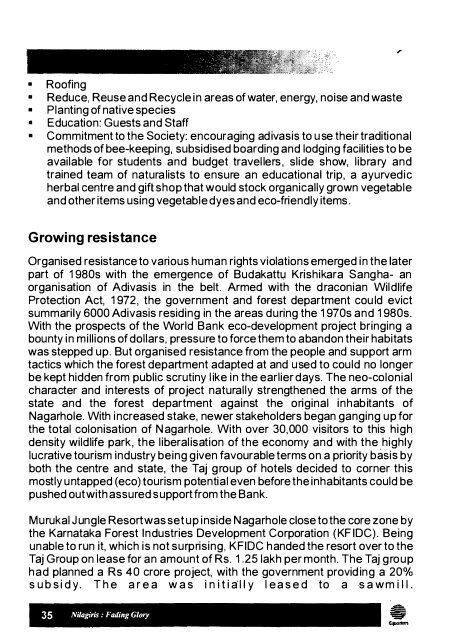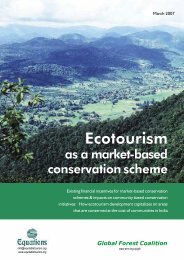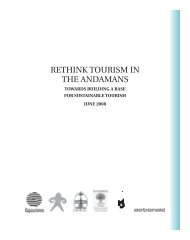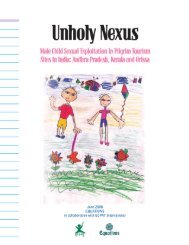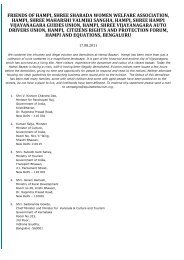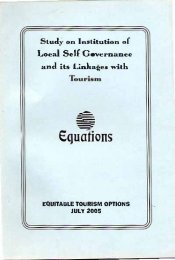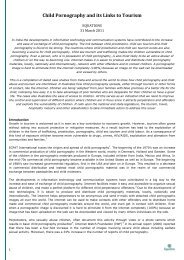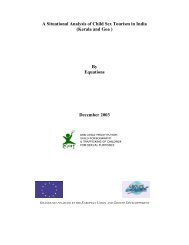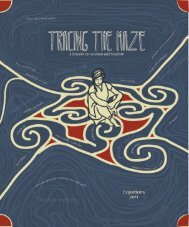Nilgiris Biosphere Reserve - Equitable Tourism Options
Nilgiris Biosphere Reserve - Equitable Tourism Options
Nilgiris Biosphere Reserve - Equitable Tourism Options
Create successful ePaper yourself
Turn your PDF publications into a flip-book with our unique Google optimized e-Paper software.
•<br />
Roofing<br />
•<br />
Reduce, Reuse and Recycle in areas of water, energy, noise and waste<br />
•<br />
Planting of native species<br />
•<br />
Education: Guests and Staff<br />
•<br />
Commitment to the Society: encouraging ad iva sis to use their traditional<br />
methods of bee-keeping, subsidised boarding and lodging facilities to be<br />
available for students and budget travellers, slide show, library and<br />
trained team of naturalists to ensure an educational trip, a ayurvedic<br />
herbal centre and gift shop that would stock organically grown vegetable<br />
and other items using vegetable dyes and eco-friendly items.<br />
Growing resistance<br />
Organised resistance to various human rights violations emerged in the later<br />
part of 1980s with the emergence of Budakattl,l Krishikara Sangha- an<br />
organisation of Adivasis in the belt. Armed with the draconian Wildlife<br />
Protection Act, 1972, the government and forest department could evict<br />
summarily 6000 Adivasis residing in the areas during the 1970s and 1980s.<br />
With the prospects of the World Bank eco-development project bringing a<br />
bounty in millions of dollars, pressure to force them to abandon their habitats<br />
was stepped up. But organised resistance from the people and support arm<br />
tactics which the forest department adapted at and used to could no longer<br />
be kept hidden from public scrutiny like in the earlier days. The neo-colonial<br />
character and interests of project naturally strengthened the arms of the<br />
state and the forest department against the original inhabitants of<br />
Nagarhole. With increased stake, newer stakeholders began ganging up for<br />
the total colonisation of Nagarhole. With over 30,000 visitors to this high<br />
density wildlife park, the liberalisation of the economy and with the highly<br />
lucrative tourism industry being given favourable terms on a priority basis by<br />
both the centre and state, the Taj group of hotels decided to corner this<br />
mostly untapped (eco)tourism potential even before the inhabitants could be<br />
pushed out with assured support from the Bank.<br />
Murukal Jungle Resort was set up inside Nagarhole close to the core zone by<br />
the Karnataka Forest Industries Development Corporation (KFIDC). Being<br />
unable to run it, which is not surprising, KFIDC handed the resort over to the<br />
Taj Group on lease for an amount of Rs. 1.25 lakh per month. The Taj group<br />
had planned a Rs 40 crore project, with the government providing a 20%<br />
subsidy. The area was initia'lly leased to a sawmill.<br />
35 Nilagiris : Fading Glory


